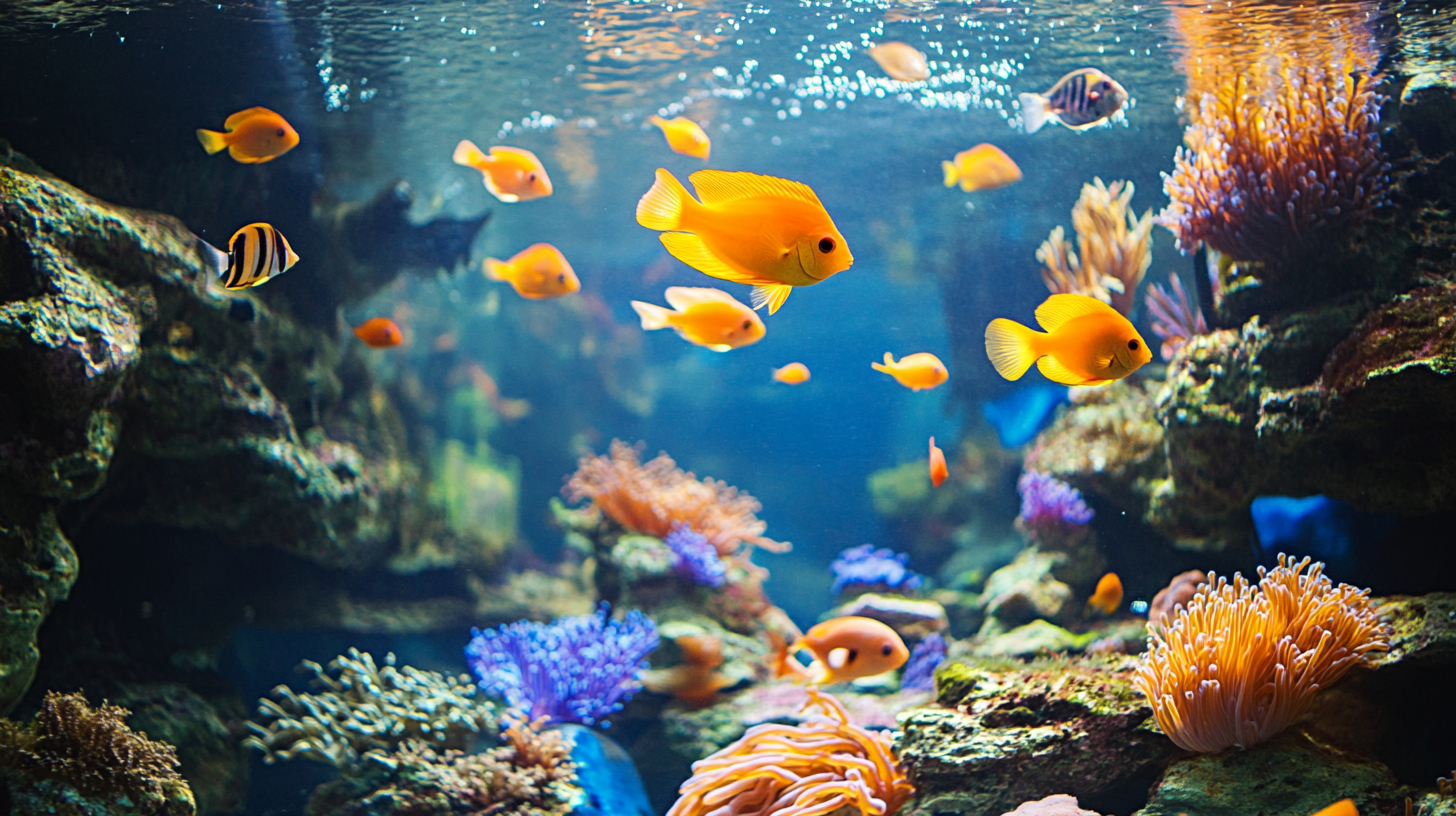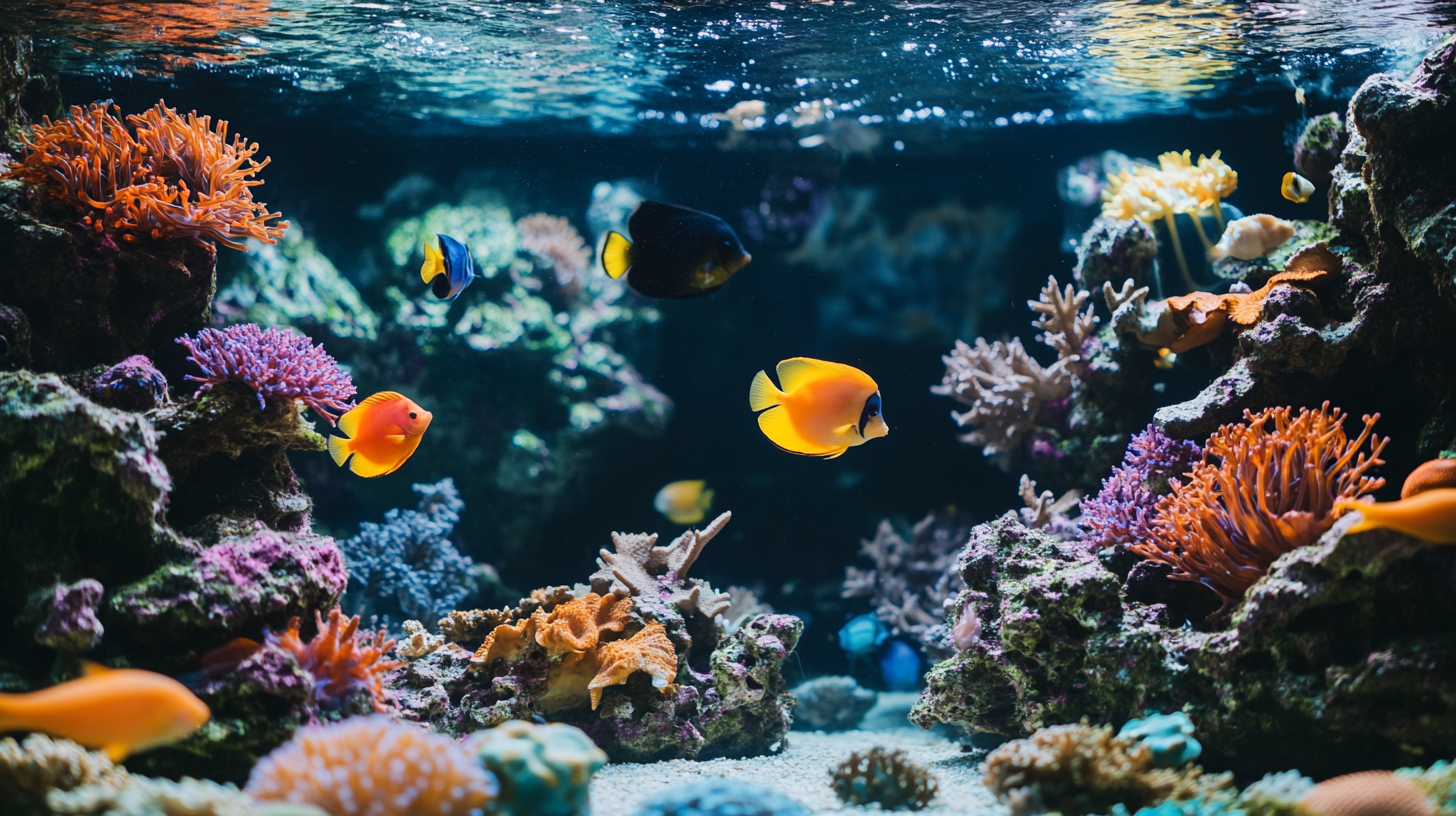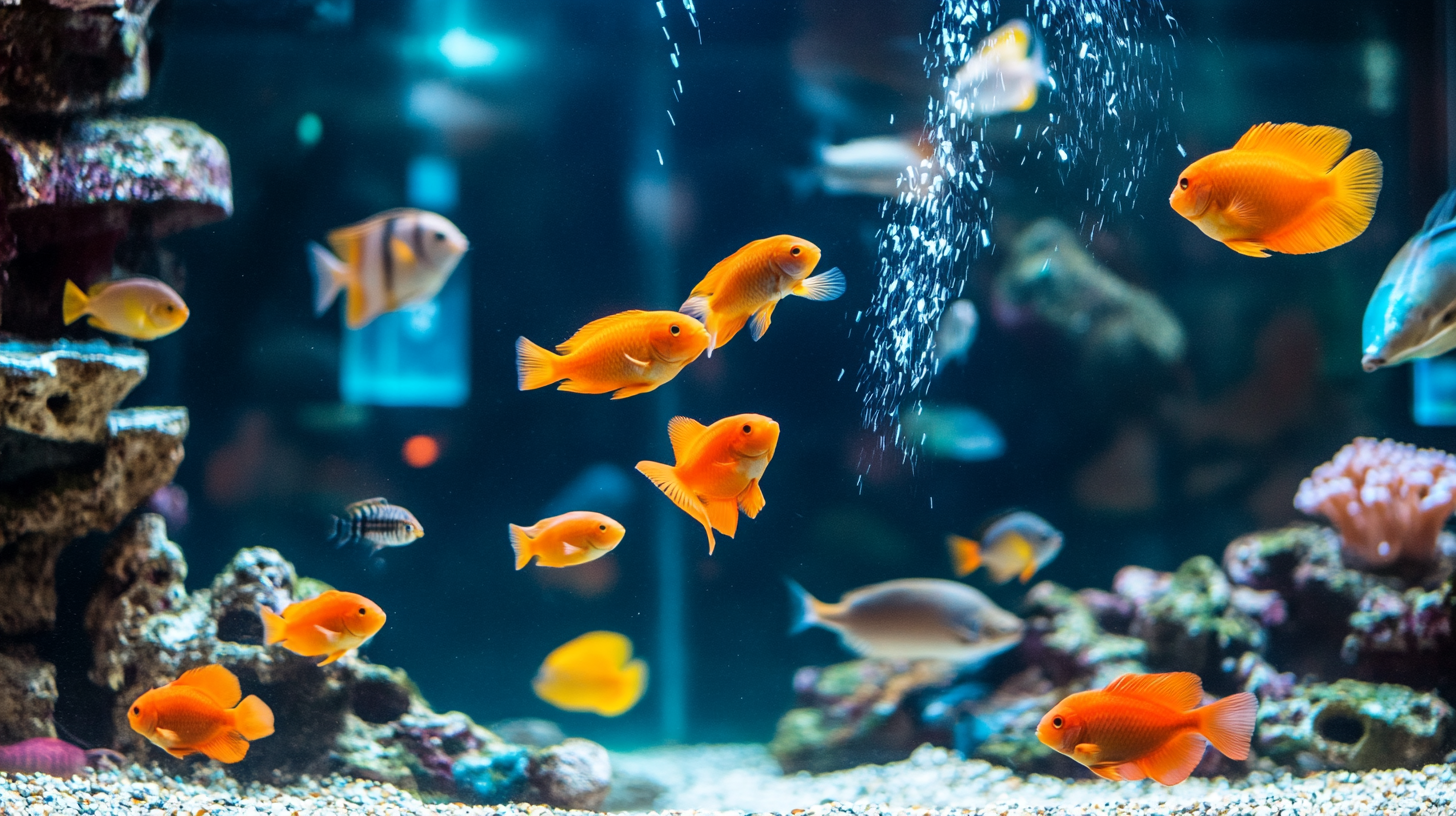Global Market Analysis for Best Fish Tank Industry Forecasting Trends and Opportunities by 2025
 The fish tank industry is emerging as a dynamic and rapidly evolving market, reflecting trends that could redefine both consumer preferences and business strategies by 2025. As urbanization continues and more individuals seek to integrate nature into their living spaces, the demand for innovative and aesthetically pleasing fish tanks is expected to surge. This blog will delve into the global market analysis of the fish tank industry, highlighting key forecasting trends and identifying significant opportunities for growth. By examining comparative data from various segments, we will explore how advancements in technology, design, and sustainability are shaping the future of fish tanks. Join us as we navigate the intricacies of this vibrant market landscape, equipping stakeholders with insights that can lead to informed decision-making and strategic positioning in the years to come.
The fish tank industry is emerging as a dynamic and rapidly evolving market, reflecting trends that could redefine both consumer preferences and business strategies by 2025. As urbanization continues and more individuals seek to integrate nature into their living spaces, the demand for innovative and aesthetically pleasing fish tanks is expected to surge. This blog will delve into the global market analysis of the fish tank industry, highlighting key forecasting trends and identifying significant opportunities for growth. By examining comparative data from various segments, we will explore how advancements in technology, design, and sustainability are shaping the future of fish tanks. Join us as we navigate the intricacies of this vibrant market landscape, equipping stakeholders with insights that can lead to informed decision-making and strategic positioning in the years to come.
Key Factors for Selecting Quality Fish Tank Manufacturers
 When selecting quality fish tank manufacturers, it is essential to consider several key factors that can significantly impact your aquarium experience. The ongoing trends within the fish tank market indicate a diverse range of materials, including glass, acrylic, and plastic, each offering distinct features and advantages.
When selecting quality fish tank manufacturers, it is essential to consider several key factors that can significantly impact your aquarium experience. The ongoing trends within the fish tank market indicate a diverse range of materials, including glass, acrylic, and plastic, each offering distinct features and advantages.
Understanding these materials can help consumers make informed choices that suit their style and maintenance preferences.
One critical aspect to assess is the manufacturer’s reputation in the industry. Look for companies that provide transparent information about their production processes and sustainability practices. Additionally, consider the warranty and customer service they offer, as these can be indicators of a company’s commitment to quality.
Tips: When evaluating manufacturers, always check for certifications or customer reviews to gauge the quality of their products. Furthermore, exploring options available through both online and offline channels can uncover diverse pricing and specifications that might better suit your needs.
Lastly, staying updated with market growth trends, especially as projected for 2024, can guide you towards manufacturers that are keeping pace with the latest innovations in the fish tank industry.
Emerging Market Trends in the Fish Tank Industry
The fish tank industry is experiencing a notable transformation, spurred by emerging market trends that highlight a growing interest in aquatic hobbies and eco-friendly practices. As more individuals seek to create tranquil environments in their homes, the demand for innovative and aesthetically pleasing fish tanks has surged. Manufacturers are responding by developing tanks that blend seamlessly with interior designs, utilizing sleek materials and incorporating technology to enhance the aquatic experience.
Sustainability is another key trend influencing the fish tank industry. Consumers are increasingly concerned about the environmental impacts of their purchases, leading to a rise in demand for eco-friendly products. This encompasses everything from energy-efficient filtration systems to tanks made from recycled materials. Additionally, the growing popularity of aquascaping—an art form that combines aquarium keeping with landscape design—encourages hobbyists to engage more deeply with their aquariums, promoting not just a hobby but also awareness of aquatic ecosystems.
As we look towards 2025, these trends indicate a promising outlook for the fish tank industry. With an expanding consumer base and a shift toward environmentally responsible products, companies that capitalize on these opportunities are likely to thrive. The fusion of technology, design, and sustainability will shape the future of fishkeeping, creating an exciting era for enthusiasts and industry stakeholders alike.
Comparative Analysis of Top Fish Tank Brands
In the ever-evolving fish tank industry, understanding the comparative strengths of top brands is crucial for both industry players and consumers alike. According to a report by Market Research Future, the global aquarium market is projected to reach USD 4.5 billion by 2025, driven by rising interest in home aquariums and the increasing popularity of aquascaping. Brands such as Aqueon, Marineland, and Fluval are leading the charge, each offering unique product features and quality that cater to varied consumer preferences. For instance, Aqueon's commitment to sustainability features in their tank designs, often utilizing recyclable materials, which appeals to the eco-conscious consumer demographic.

Moreover, the brand loyalty within the fish tank industry is significantly influenced by innovation and customer service. A recent survey conducted by Grand View Research indicates that 60% of aquarium owners prefer brands that provide extensive educational resources and customer support. Marineland's comprehensive product manuals and online tutorials showcase their dedication to customer engagement, setting them apart from competitors. In contrast, Fluval continuously innovates its filtration systems, which enhances user experience and tank maintenance. As the industry shifts towards more refined and specialized products, these differentiating factors will significantly shape the market dynamics leading up to 2025.
Opportunities for Innovation in Fish Tank Design and Features
The fish tank industry is witnessing a wave of innovation, driven by a growing consumer demand for aesthetic appeal and functionality. As pet ownership continues to rise, designers are focusing on creating tanks that not only serve as habitats for aquatic life but also as stunning home decor elements. One emerging trend is the integration of smart technology, allowing owners to monitor water conditions and feeding schedules via mobile apps. This tech-savvy approach appeals particularly to younger generations, who prioritize convenience and connectivity in their lives.
Moreover, the design of fish tanks is evolving to include modular systems that can be customized to fit different spaces and preferences. These tanks now offer features like built-in filtration, LED lighting with adjustable settings, and various materials that enhance energy efficiency. The inclusion of eco-friendly materials and sustainable practices in tank production also presents manufacturers with ample opportunities to pivot towards a more environmentally conscious market. With these innovations, the industry is not just meeting consumer needs but also paving the way for a dynamic future where fish tanks blend seamlessly into modern lifestyles.
Global Fish Tank Market Trends and Opportunities by 2025
This chart illustrates the projected growth of the global fish tank market from 2019 to 2025, indicating significant opportunities for innovation in design and features as the market expands.
Future Growth Projections for the Global Fish Tank Market by 2025
As we look towards 2025, the global fish tank market is poised for significant expansion, driven by several emerging trends and evolving consumer preferences. Recent reports suggest a growing interest in sustainable aquaculture and eco-friendly practices, prompting manufacturers to innovate in design and materials. The rising popularity of aquascaping as a hobby indicates a shift in consumer focus from traditional fishkeeping to creating visually stunning aquatic landscapes, which further fuels demand for high-quality, aesthetically pleasing tanks.
In addition, advancements in technology are set to transform the market landscape. Smart aquarium systems that incorporate automated feeding and monitoring capabilities will become increasingly popular, appealing to both seasoned aquarists and newcomers alike. The integration of IoT devices in fish tanks not only enhances the user experience but also ensures a healthier environment for aquatic life, aligning with the growing emphasis on environmental sustainability. By 2025, we anticipate that these trends will not only broaden the market but also introduce new opportunities for innovation and growth within the fish tank industry.
Copyright © 2021 Payless Pet Products - All Rights Reserved.